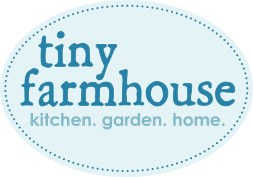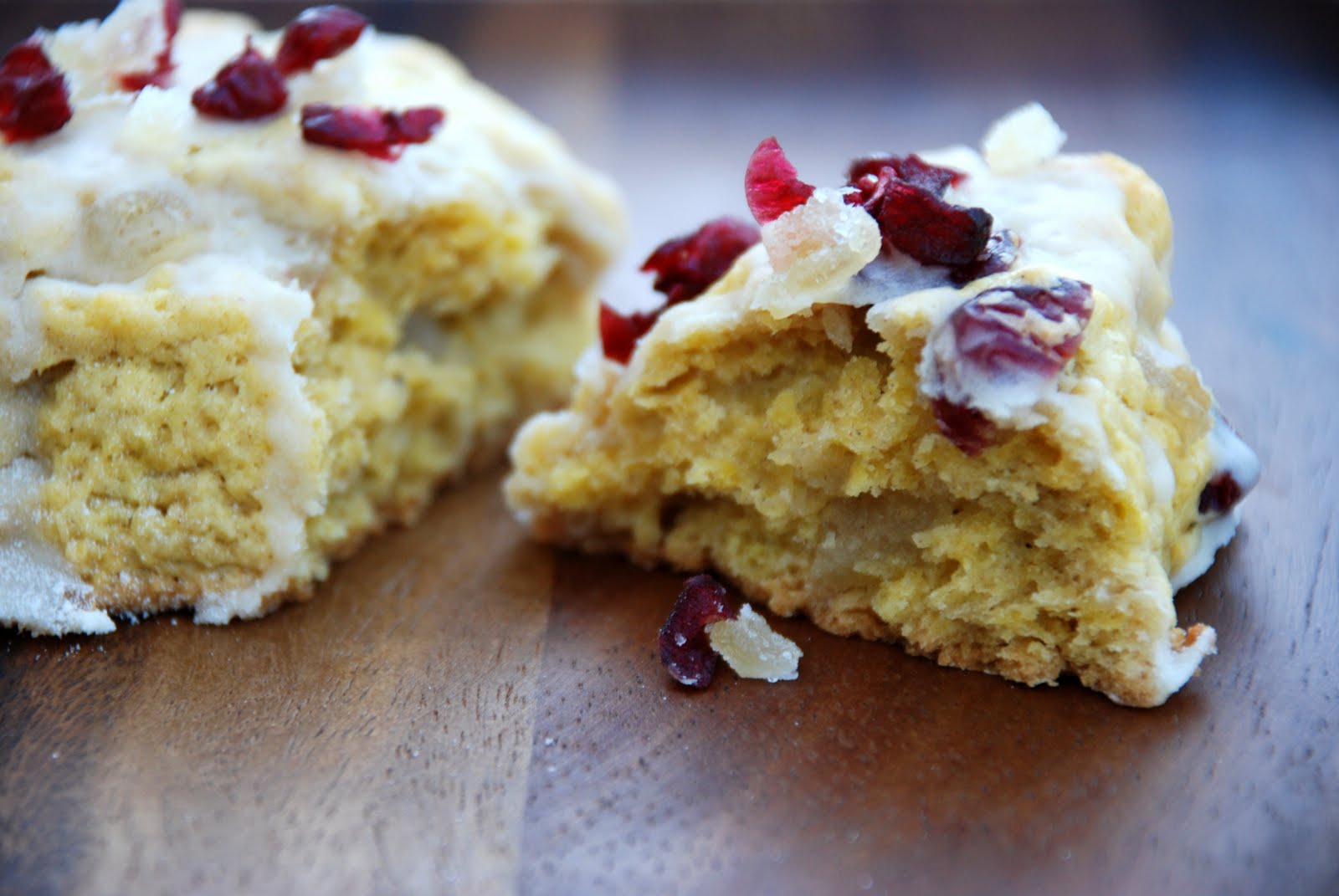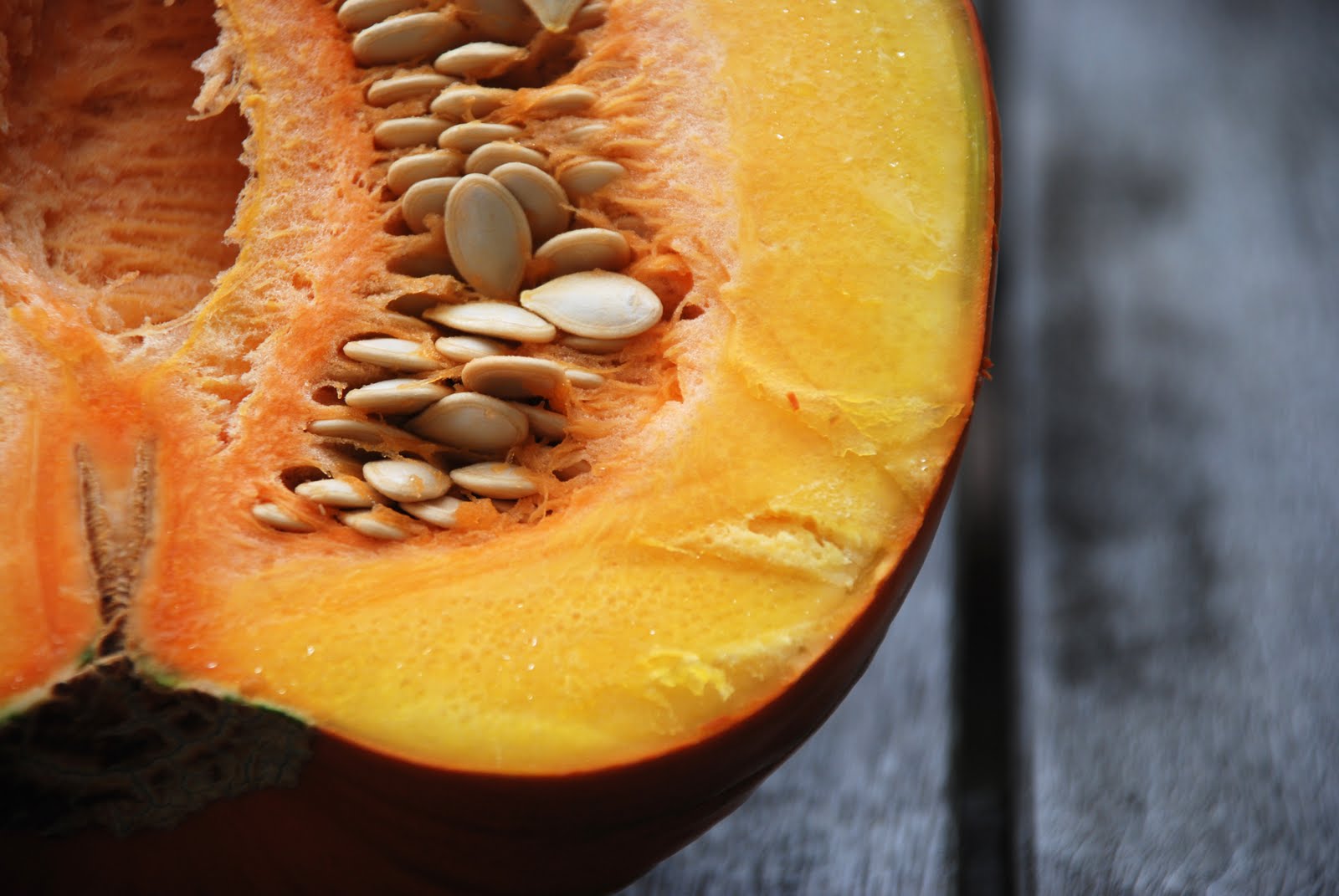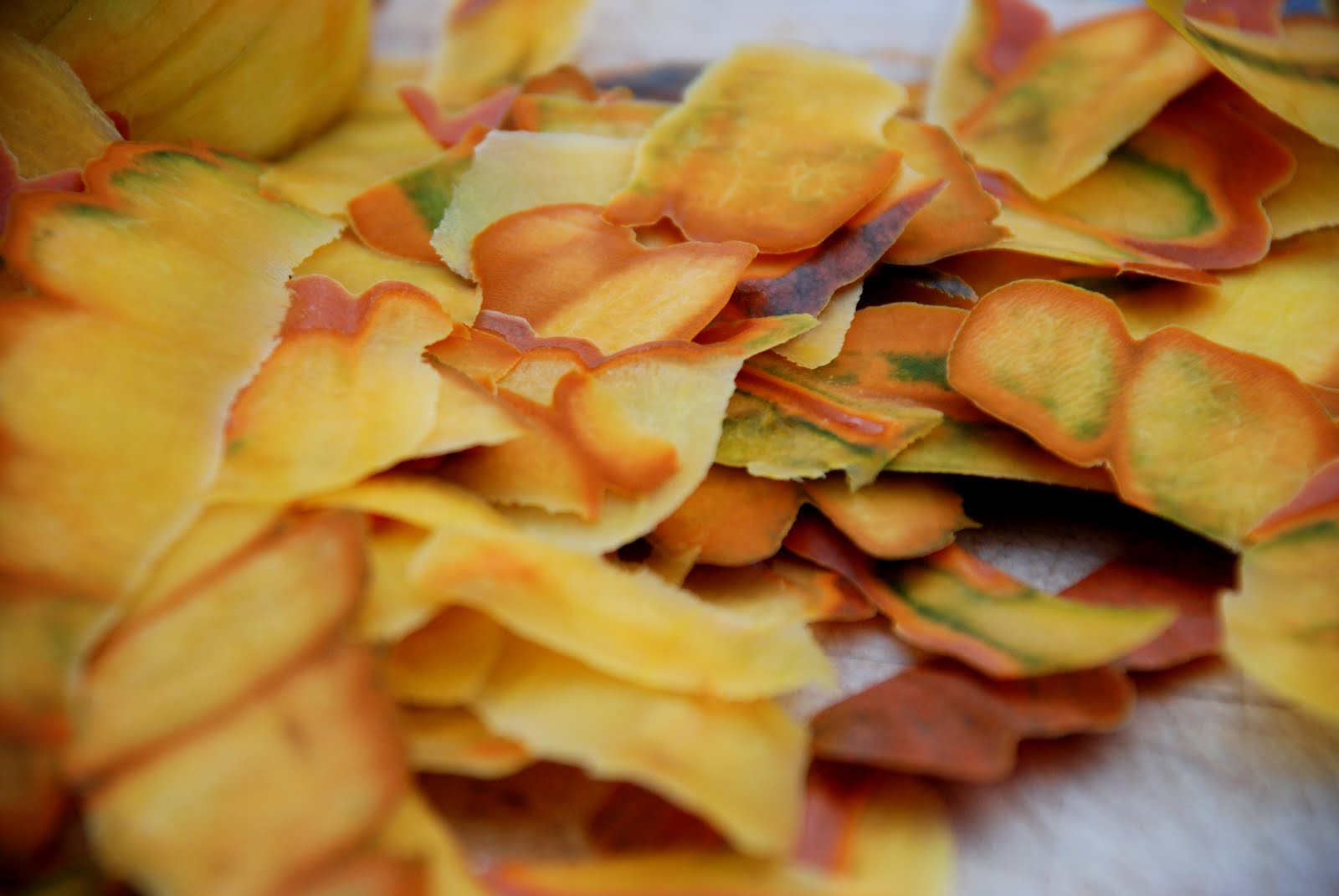Scones are a tricky baked good. Some can be like biting into the ledge that New England sits upon; brittle bits of slate-like crumb, dry, yet dense – tempting us to dump their remains into bags labeled “Quickcrete” and then to plot how we can resell them as such at our local home improvement store.
The ephemeral light and airy scone sometimes seems like Sasquatch – unsubstantiated sightings reported, but never does anyone you know attest to having actually seen one. Recently, as part of that asparagus recipe-contest loot that was sent to me, I did receive an assortment of delicious, perfectly textured scones from My House Cookies (Really. This is not like Big Foot – I’ve eaten about a dozen of them myself. I can and do vouch for their goodness.). However, I wanted to give homemade pumpkin scones a go, with a goal of their inclusion in a second cookbook. You know, if there is a second cookbook.
However, after a Poor Girl Gourmet Board of Directors meeting – a very official, two-member event that took place between JR and me following a pumpkin scone scoffing session – the Board has decided that these need to be shared. Now. No waiting for a future book. I mean, Thanksgiving is coming. We all need this recipe, which results in light and fluffy scones. Even my doubts were overruled (always doubting, I am). Following my speculation that perhaps the texture was slightly more cake-like than true scone-like, JR belted out, “Like hell it is. These are scones.” And even if the truth lies somewhere in between, I do agree with JR that keeping them from you is just plain mean.
Many of us have been raised on pumpkin puree in a can – it materializes around this time every year at the end of the supermarket baking aisle, stacked such that its pie-slice label art calls to mind Warhol in 3D – but making your own pumpkin puree, from a pumpkin that you or your local farmer grows, is quite easy, and once the puree is made, you can measure it out into commonly called for amounts – 1/2 cup for scones, 3 or more cups for pumpkin butter, whatever it takes for your favorite pumpkin bread or muffins. You get the idea, just check your best-loved pumpkin recipes and dole out the portions you need – then place those measured bits into freezer bags (that you label with the quantity, of course), and freeze them until you need them. The 5-pound sugar pumpkin that I bought at my favorite farm stand yielded about 6 cups of sweet, flavorful puree. It’s sure to be a pumpkinpalooza of baking activity at my house this week, without a doubt. And for weeks to come.
When shopping for your sugar pumpkin, the first, and probably most important thing to know is that sugar pumpkin is not the same variety as your friendly neighborhood jack o’ lantern pumpkin. Sugar pumpkins are smaller, with sweet flesh that more closely resembles butternut squash in texture than carving pumpkin flesh, which is quite fibrous (as I’m sure you are well aware from past carving activities). Look for smaller sugar pumpkins – those smaller ones tend to have sweeter, more delicate flesh – and ones that are heavy for their size. I picked through a few pumpkins before finding one that looked like it should weigh less than it did, and when it pulled my arm toward the ground with its unexpected heft, I knew it was the one. For this week, anyway.
Once you and your pumpkin arrive home – and you’re ready to cook with it – peel the pumpkin using a vegetable peeler. Remove the stem (if it can be done easily. If not, for the next step, cut not quite in perfect halves), cut the pumpkin in half, and then scoop out the seeds. The seeds can be toasted just as you would your jack o’ lantern seeds, and seasoned to your liking for snacking, or, say, pumpkin soup garnish. Toasting the seeds also keeps us from having food waste, because, heck, you’ve already paid for the pumpkin, why not get a nearly-free snack out of it as well?
Once peeled, cut the pumpkin into 1-inch cubes – a 5-pounder will give you around 10 cups of cubed pumpkin – then boil the cubes in water until they’re softened and easily pierced with a fork. Drain the pumpkin well and allow it to cool for 10 to 15 minutes before pureeing. I pureed my pumpkin in the food processor; each batch took less than a minute. Transfer each completed batch to a bowl, and then parcel out your measured puree into freezer bags (or other airtight containers) as we’ve discussed, and freeze them for future use, or refrigerate for more immediate use.
When making scones, it is important that the butter not melt into the dough, lest you end up with that Quickcrete fodder – the little pieces of butter within the dough melt as the scones bake, creating air pockets and therefore flakiness, so all ingredients must be kept cold during the mixing phase. Ideally, you’ll puree your pumpkin the day prior to the scone-baking, and then refrigerate it overnight. If you haven’t the time for that sort of thing, put the puree in the freezer until it is chilled (but not frozen), approximately 15 minutes, before proceeding with the recipe.
And if you’re using canned puree, be sure that you’ve got plain puree, not the spiced and sugared pumpkin pie filling variety. That would be a lot of competing, and very sweet, tastes.
Ingredients
- 2 cups unbleached all-purpose flour
- 1/4 cup packed dark brown sugar
- 2 teaspoons baking powder
- 1/2 teaspoon kosher salt
- 1/4 teaspoon ground cinnamon
- 1/8 teaspoon ground ginger
- 1/8 teaspoon allspice
- 1/8 teaspoon nutmeg
- 1/2 cup (1 stick) unsalted butter, very cold (as in, butter that has been in the freezer for 10 minutes prior to using it)
- 1/4 cup dried cranberries
- 1/4 cup finely chopped crystallized ginger
- 1/2 cup pumpkin puree
- 2 tablespoons heavy cream
- 1 large egg yolk, lightly beaten
- 2 to 3 tablespoons heavy cream
- 1/2 cup confectioners' sugar, sifted
- 1/4 cup heavy cream
- 1 tablespoon honey
- 1/4 teaspoon ground ginger
- 3 tablespoons dried cranberries, finely chopped
- 1 tablespoon finely chopped crystallized ginger
Instructions
- Preheat the oven to 400 degrees. Have a 10 by 15-inch rimmed baking sheet at the ready.
- In a large mixing bowl, combine the flour, brown sugar, baking powder, salt, cinnamon, ginger, allspice, and nutmeg, mixing well to evenly distribute all.
- Take your very cold butter out of the freezer, and cut it into cubes. Place the cubes into the bowl with the flour mixture, and using either your fingertips (not your palms, as they are warmer than your fingertips and may melt the butter as you work it into the flour) or a pastry blender, cut the butter into the flour until the pieces of butter are approximately the size of peas. Stir in the dried cranberries and crystallized ginger.
- In a small mixing bowl, combine the pumpkin puree, cream, and the egg yolk, mixing well. Pour the puree mixture into the dry mixture. Using a wooden spoon or other large, sturdy spoon, mix the wet ingredients into the dry ingredients until you no longer have any dry spots remaining in the dough. This requires a little bit of effort - 2 to 3 minutes of mixing with a spoon - so don't go reaching for additional puree or cream in those first 30 seconds, the dough will come together.
- Place a rectangle of parchment paper that is approximately 10 by 15-inches on your work surface and dust it with flour. Lightly dust your hands and a rolling pin with flour, adding more as necessary during the rolling out process. Transfer the dough from the mixing bowl to the floured parchment paper and roll it out to an 8-inch round that is about 1-inch deep. We'll be baking the scones on the parchment, so the next step is to transfer the parchment paper with the dough round to your baking sheet.
- Brush the top of the dough with the cream for the wash. Using a sharp knife or pastry scraper, cut the round into 8 as-equal-as-you-can-get-them wedges. Spread the wedges out around the baking sheet so that they are not touching one another and have at least 1-inch between them. Bake until the scones are just starting to brown at the edges, 18 to 20 minutes. The tops will still be slightly soft to the touch at this point, but all is good. Remove them from the oven and allow them to cool for at least 10 minutes before glazing.
- While the scones bake, mix together the confectioners' sugar, cream, honey, and ground ginger in a small mixing bowl until you have a creamy frosting. Once the scones have cooled for that minimum of 10 minutes, use a spoon to drizzle the glaze over the top of the scones. Then, sprinkle the chopped dried cranberries and crystallized ginger over each scone, and serve them forth.
Estimated cost for 8 scones: $4.41, or 55-cents each. I’ll be making 16 for Thanksgiving breakfast, big spender that I am. The flour costs 48-cents for 2 cups. The brown sugar costs 16-cents for 1/4 cup. The baking powder costs about two cents. The salt we never factor in, so there’s that. The cinnamon costs 6-cents, we’ll estimate the remaining spices at 12-cents, including the ginger for the glaze. The butter costs 70-cents for one stick of Whole Foods 365 Everyday Value brand. The pumpkin puree was 1/2 cup from 6 cups that cost $2.50, or 42-cents per cup, so 1/2 cup is 21-cents. The cream cost $1.89 for 16 tablespoons, so the total cost of cream here is $1.06. The egg should cost no more than 26-cents (factoring in the whole egg, though you should refrigerate the white or freeze it for future use – up to 2 days in the fridge or 1 year in the freezer). The dried cranberries cost 42-cents for 7 tablespoons, the crystallized ginger costs around 50-cents. The confectioners’ sugar costs 17-cents, the honey is 25-cents, cream and ginger have already been factored in.
Dinner tonight: Whole Wheat Linguine with Roasted Macomber Turnip and Acorn Squash. Estimated cost for two: $6.37. The linguine cost $1.99 for a 1-pound bag, we’ll be using half of that, so $1.00. The oil for roasting costs 36-cents, the oil for the saute portion of the preparation costs the same. The roasted garlic costs around 11-cents. The turnip cost a whopping $1.83 and the acorn squash is from our garden, but it weighs only a pound, so if purchased, that would be 89-cents. The butter in the dish costs 70-cents, and the sprinkling of cheese is 25-cents. I’m going to toss some crumbled bacon over the dish, so two slices of fancy Black Forest bacon cost around 87-cents. Not quite a meatless Monday, but low-meat, anyway.





OK I've always steered clear of pureeing my own pumpkin but after reading this entry . . . I'm tempted. Yes, yes, I'm sorely tempted to give it a try.
Oh my goodness! I am notoriously horrid at scones, but these sound absolutely amazing. I also admit to never having cooked a pumpkin in my life – I love the canned stuff.
When I moved to New Zealand for a bit, I noticed that pre-packaged and pre-made food was less common and more people cooked from scratch. Also, canned pumpkin was rarer than gold over there! I remember being amazed
MMMMMMMMM,..these scones with the glaze look fabulously tasty!!
Wow!
My mouth is watering. I love scones and can never get enough. Add that to my undying love for pumpkin and these are match made in heaven!